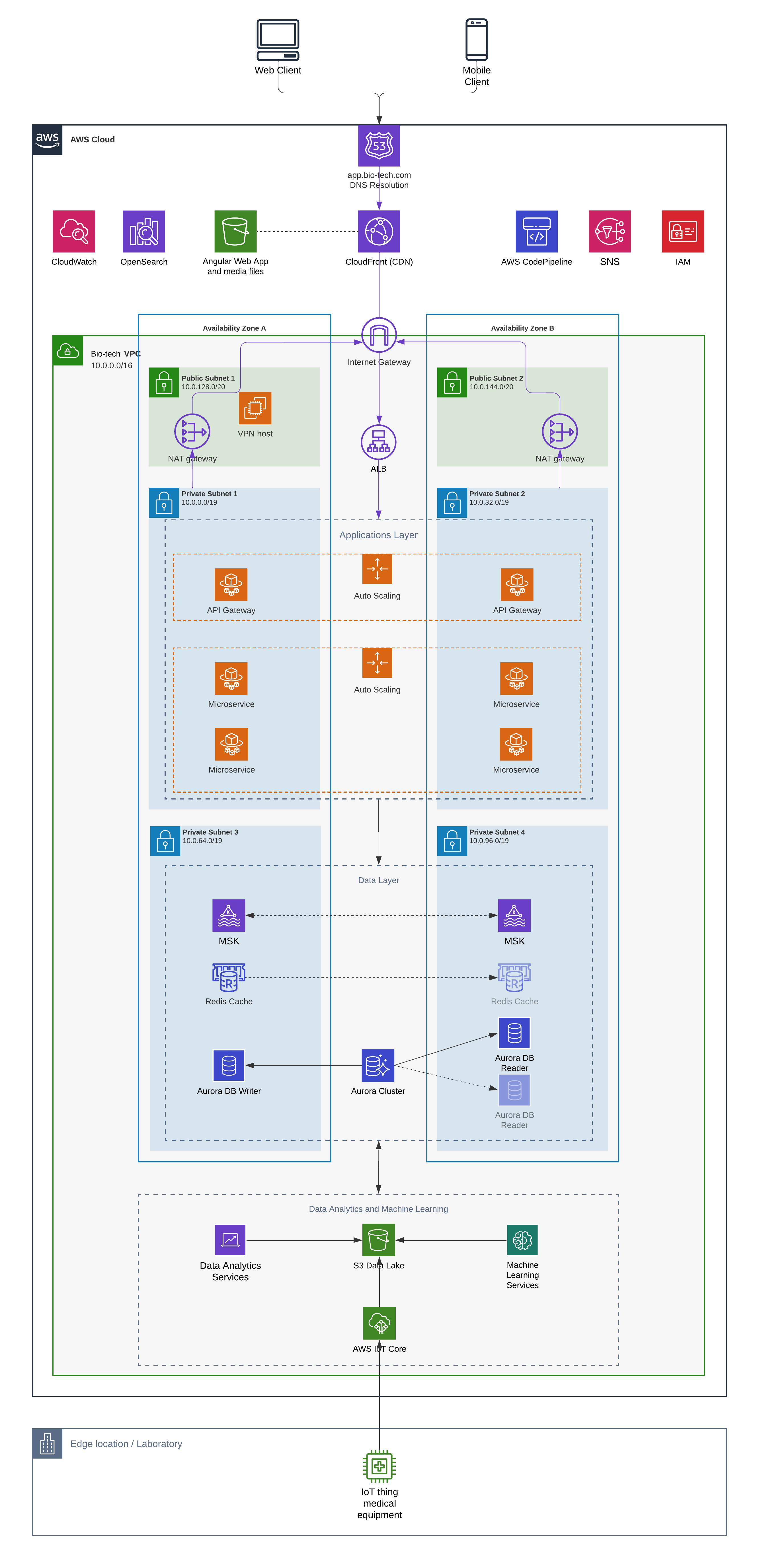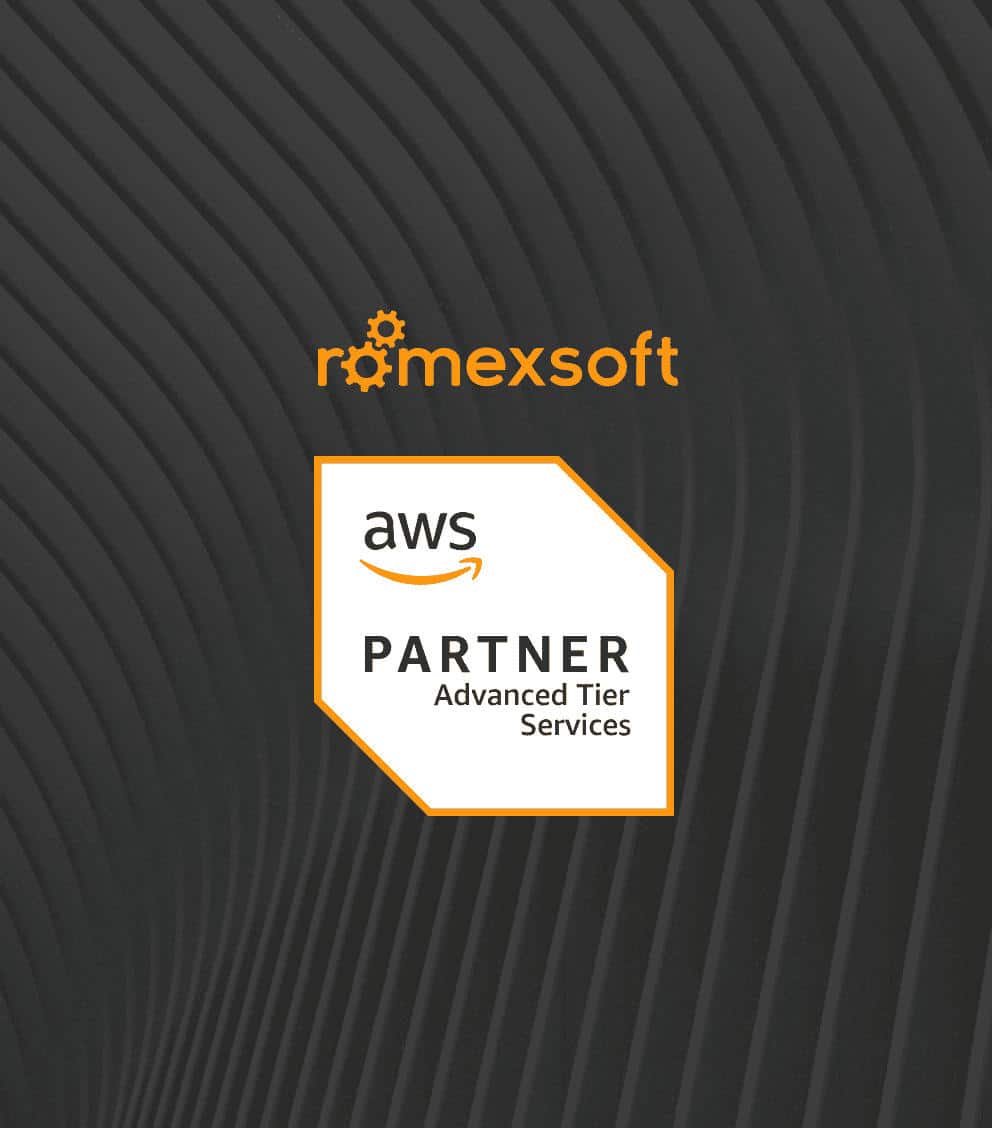Full-Cycle Software Development Services for BioTech Platform
We rapidly formed a skilled, dedicated development team to meet the client's urgent need for building a software solution from scratch.

Our Customer
Biotech Research Platform
A biotech firm partnered with us to pioneer a transformative approach to biomedical innovation. Their groundbreaking solution focuses on inducing catalytic failure in real-world human models of disease, utilizing organs from deceased donors unsuitable for transplantation. This unconventional approach harnesses the untapped potential of these organs, providing profound insights into human disease and therapeutic responses.
The Challenges
Software MVP Development from Scratch
The primary challenge was to assemble an appropriate team of developers who would create the necessary solution from scratch. We put emphasis on full-cycle software development services: business analysis, design, development ,quality assurance, and DevOps. This team had to be assembled in the shortest terms so as to start the project as quickly as possible.
Secondly, the client’s team of scientists and perfusion specialists has built a “mechanical patient” system that allows clinical research on isolated human organs. Having validated on proof of concept (POC), the client primarily needed to develop a reliable and scalable technology platform for their system. Of course, the building of the platform began with a minimum viable product (MVP) launch.
The Solution
Full-Cycle Software Development
Team Composition
With an aim of meeting all the requirements, we suggested assembling a team of software development experts. The managed team comprises a solution architect, project manager, UI/UX designer, back-end and front-end developers, data engineer, QA engineer and DevOps engineer. This dedicated squad of experts enables us to build the MVP as quickly and efficiently as possible within the established budget.
In order to get there, we conducted 38 interviews in a month before swiftly launching the project. Within four weeks, half of the team had already started performing tasks on the project. Romexsoft assembled and put the entire team to work as soon as in just two months, and what allowed us to perform this so seamlessly and promptly was the strategic approach and our expertise in managing onboarding.
MVP’s Infrastructure
The client’s application infrastructure was built within the cloud-based Amazon Web Services (AWS) environment, which was set up and configured by us from the ground up. We also adhered to the Pillars of the AWS Well-Architected framework, utilizing standard AWS technologies.
Employing Infrastructure as a code (IaaC) approach, specifically the Terraform, allowed us to seamlessly build, modify, version, maintain and replicate the solution’s infrastructure. The application is provisioned in the isolated Virtual Private Cloud (VPC) that offers advanced security features including security groups and network access controls.
For the main execution environment, we configured Amazon ECS on AWS Fargate, eliminating the need for managing clusters of virtual machines to run containers. This approach removes the complexities of choosing server types, deciding on cluster scaling, or optimizing cluster packing.
The initial infrastructure design includes autoscaling, the Application Load Balancer (ALB) for handling load spikes, and the Multi-AZ feature to eliminate hardware and software failures. The client will adopt a microservices architecture to deliver services based on the business domain requirements.
Application Architecture
The adoption of a microservices architecture allows for the easy scaling of individual services, isolating failures to prevent widespread system disruptions. Microservices provide the flexibility to use different programming languages (Python or NodeJS in our case), which simplifies development and deployment. With microservices, we have achieved faster time-to-market by developing and releasing new features independently. This type of infrastructure also proves to foster experimentation and innovation. Enhanced data security is a plus, thanks to the compartmentalization of sensitive information and secure APIs.
The client has opted for Java Spring Boot framework as the primary backend technology stack. This framework provides a quick and efficient environment for Java software development, reducing code complexity, streamlining testing, and enabling easy integration with various databases and services all the while facilitating dependency management and offering embedded server support.
Amazon Managed Streaming for Apache Kafka (MSK) is to be used as the main event-driven communication platform between microservices.
AWS Aurora with read replicas is used as the main database layer, offering a high-performance storage subsystem, fault tolerance, built-in clustering, replication, and autoscaling of read replicas.
AWS ElastiCache is utilized as the caching and user sessions distribution layer, providing enhanced security, reliability, scalability, and performance compared to open-source in-memory storage alternatives.
The front-end layer is implemented as an Angular single-page application (SPA) hosted as a static website on S3. Communication between the front-end and back-end is to be done through the REST API protocol.
Two separate environments, Sandbox and Production, have been selected for development and production use. The environments are isolated in separate AWS accounts under the Client’s AWS Organization. This approach ensures needed account segregation and security compliance. It proves especially useful in case of new product features being delivered for testing by the development team to be sure that production remains stable during the testing activities.
Application deployment is orchestrated using AWS CodePipeline, CodeBuild, and CodeDeploy services. The automated CI/CD process accelerates code delivery, facilitates rapid failure identification through automated testing, and ultimately reduces costs.
MVP of Biomedical Software – Architecture diagram
The Results
Advanced Clinical Platform with Scalable Architecture
In general, this project represents the power of partnership and innovation in biotech software development and solving complex challenges and achieving transformative outcomes for the client. The successful launch of the Minimum Viable Product MVP is a critical milestone that helps validate the feasibility and potential of the whole client’s clinical research system. This endeavor commenced by Romexsoft also paved the way for further development.
The successful foundation and launch of the MVP has led to the following achievements:
- Streamlining clinical research
We have addressed the client’s fundamental business need, which involved the ability to conduct research easily, conveniently, and efficiently, with minimal human factor errors. - Scalable architecture
Our experts delivered a robust and scalable platform, ensuring that it can accommodate further growing demands of clinical research. Besides, this architecture is designed to support the integration of additional features as the system evolves. - Streamlined development
The usage of the Infrastructure as Code (IaaC) approach with the Terraform has not only optimized the development workflow but also laid the groundwork for the system’s scalability and resilience. - Enhanced reliability
With the system’s reliability being a top priority, rigorous testing and quality assurance procedures have been implemented to minimize the risk of system failures during critical research processes. - Improved security
By segregating the development and production environments, sensitive data and production resources are shielded from potential security risks originating in the development phase. This ensures that confidential information and critical assets are safeguarded at all times. Moreover, isolating environments in separate AWS accounts decreases the attack surface, limiting the risk of unauthorized access and potential breaches.
Why Romexsoft
Development Speed, Scale, and Technical Excellence
Our experience, as a full cycle software development company, enables us to align technical innovation with critical business objectives of the industry, delivering robust platforms that support clinical research, vast data analysis, and more. The dedicated teams we assemble can begin work quickly – building complex, scalable and compliant cloud-native apps from the ground up.
Our full-cycle software development process reduces delivery overhead by:
- Fast team setup with vetted experts across all required roles
- Architecture best practices for fault tolerance and streamline deployments
- Modern tech stack with IaC, CI/CD, and microservices
- Proactive software testing to avoid late-stage issues.
Full-Cycle Software Development Q&A
These services give ownership of the software development process, resulting in better alignment with business goals, faster time-to-market, and higher product quality. Since one team handles everything, there’s greater consistency, accountability, and reduced communication gaps.
Comprehensive development services also simplify vendor management, improve long-term scalability, and ensure continuous optimization through monitoring and updates. Ultimately, they reduce risks, lower total cost of ownership, and help businesses deliver reliable software more efficiently.
End-to-end software development covers the complete process from idea to maintenance. It starts with discovery and planning, where business goals and technical requirements are defined. This is followed by system architecture, leading into the development phase where frontend and backend components are built using best practices like CI/CD.
Once developed, the product goes through thorough testing and is deployed to production. After launch, ongoing maintenance ensures stability, performance, and scalability. Throughout the cycle, project management (typically Agile) ensures timely, cost-effective delivery and continuous improvement.
Agile is commonly used to manage the SDLC by breaking the development process into small, manageable iterations called sprints. Instead of completing the entire product at once, Agile teams deliver functional parts incrementally, allowing for continuous feedback, rapid changes, and early value delivery.
It promotes collaboration among cross-functional teams, emphasizes adaptive planning, and integrates testing throughout the cycle. Agile makes the SDLC more flexible, helping teams respond quickly to changing requirements while maintaining high product quality and faster release cycles.
In modern software development, security is embedded throughout the SDLC rather than treated as a separate final step. This shift helps reduce hidden vulnerabilities and lowers overall security risks.
By adopting DevSecOps practices, teams integrate security checks (such as code reviews, architecture analysis, and penetration testing) into every phase of development. Developers, security specialists, and operations teams collaborate from the start, ensuring the software is designed, built, and deployed with security in mind.



